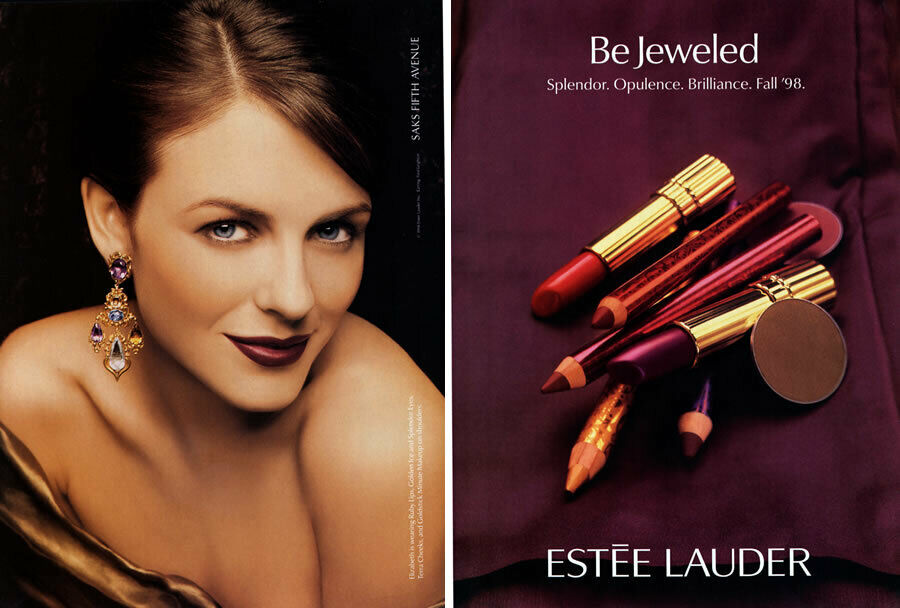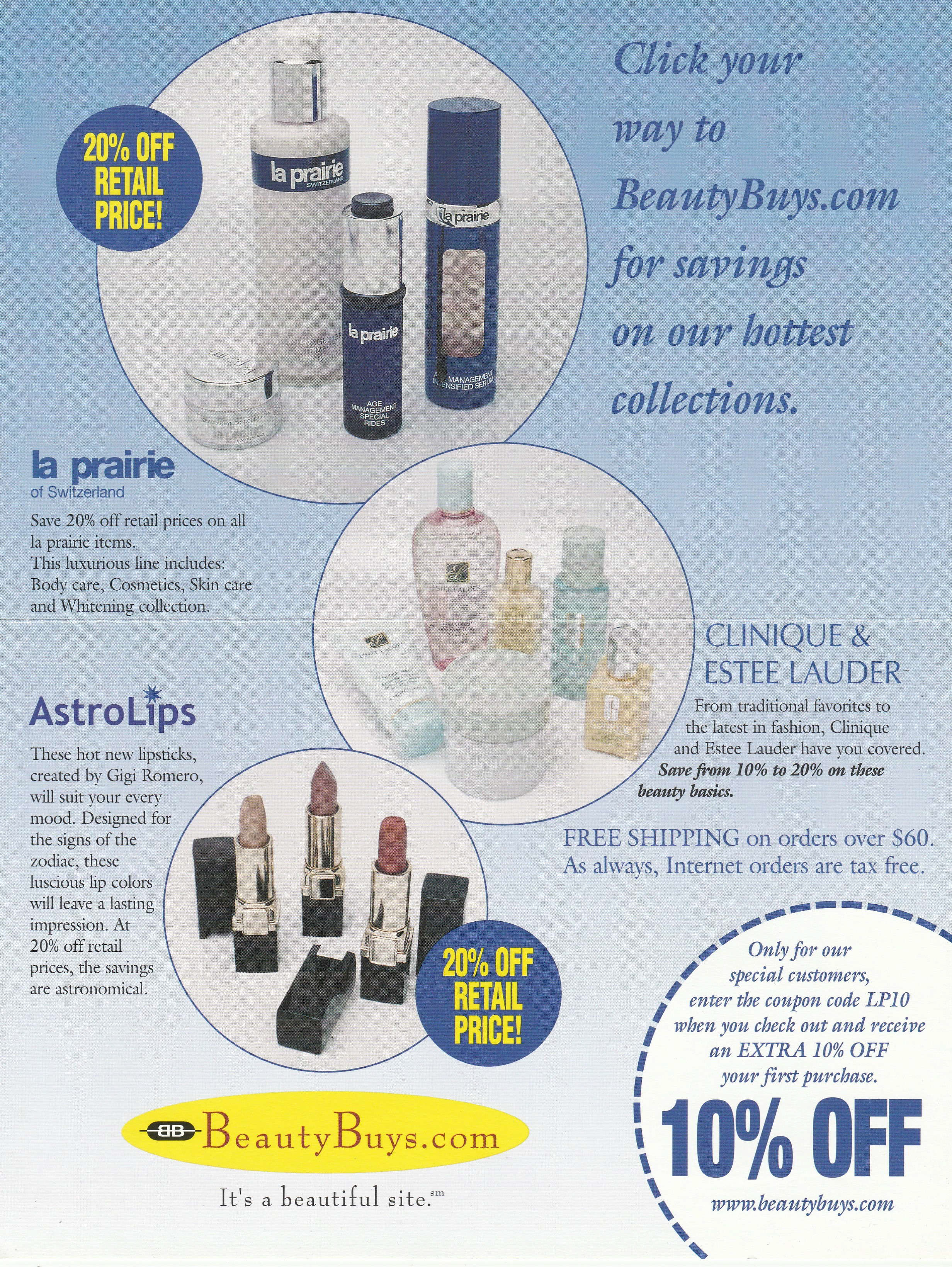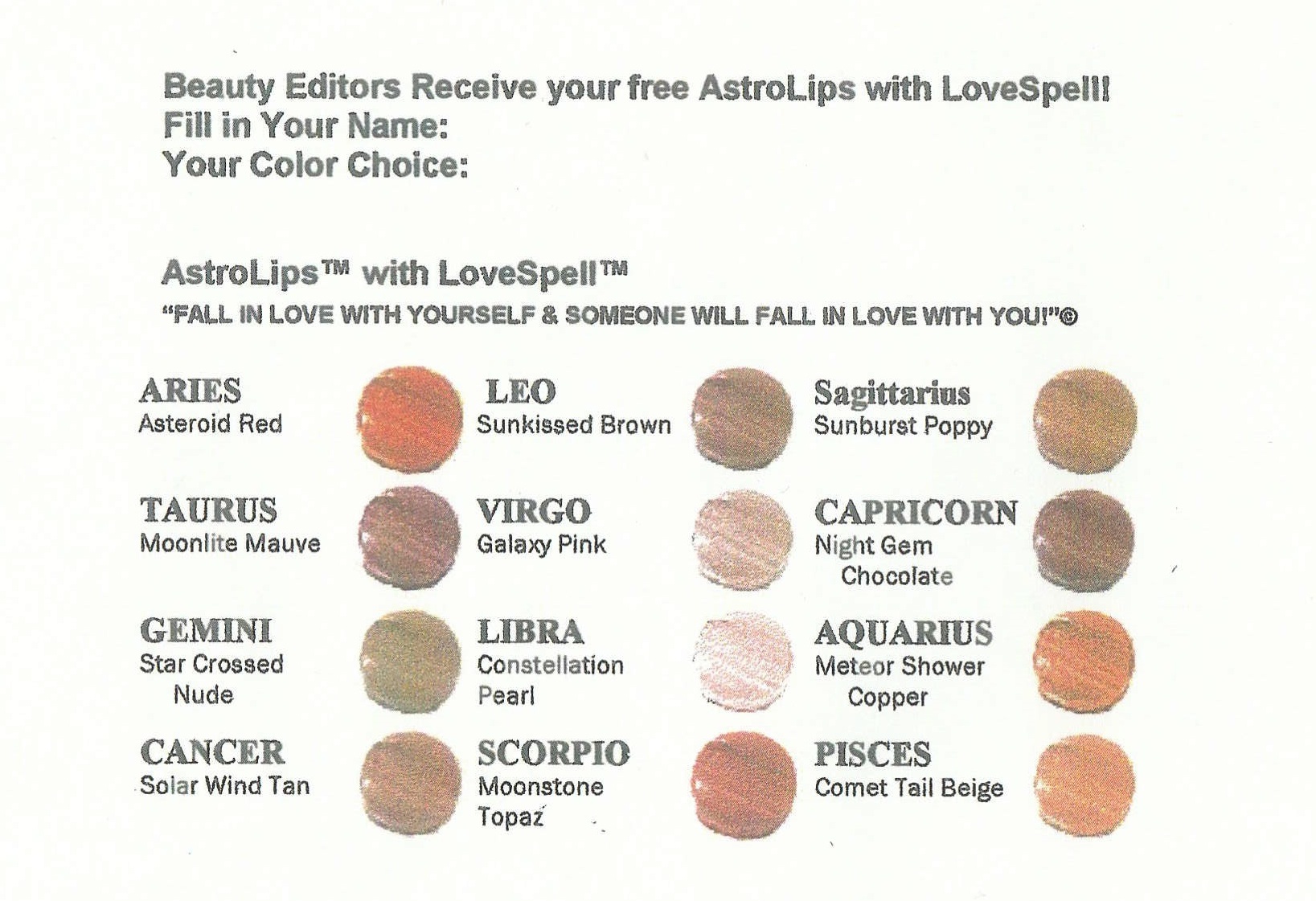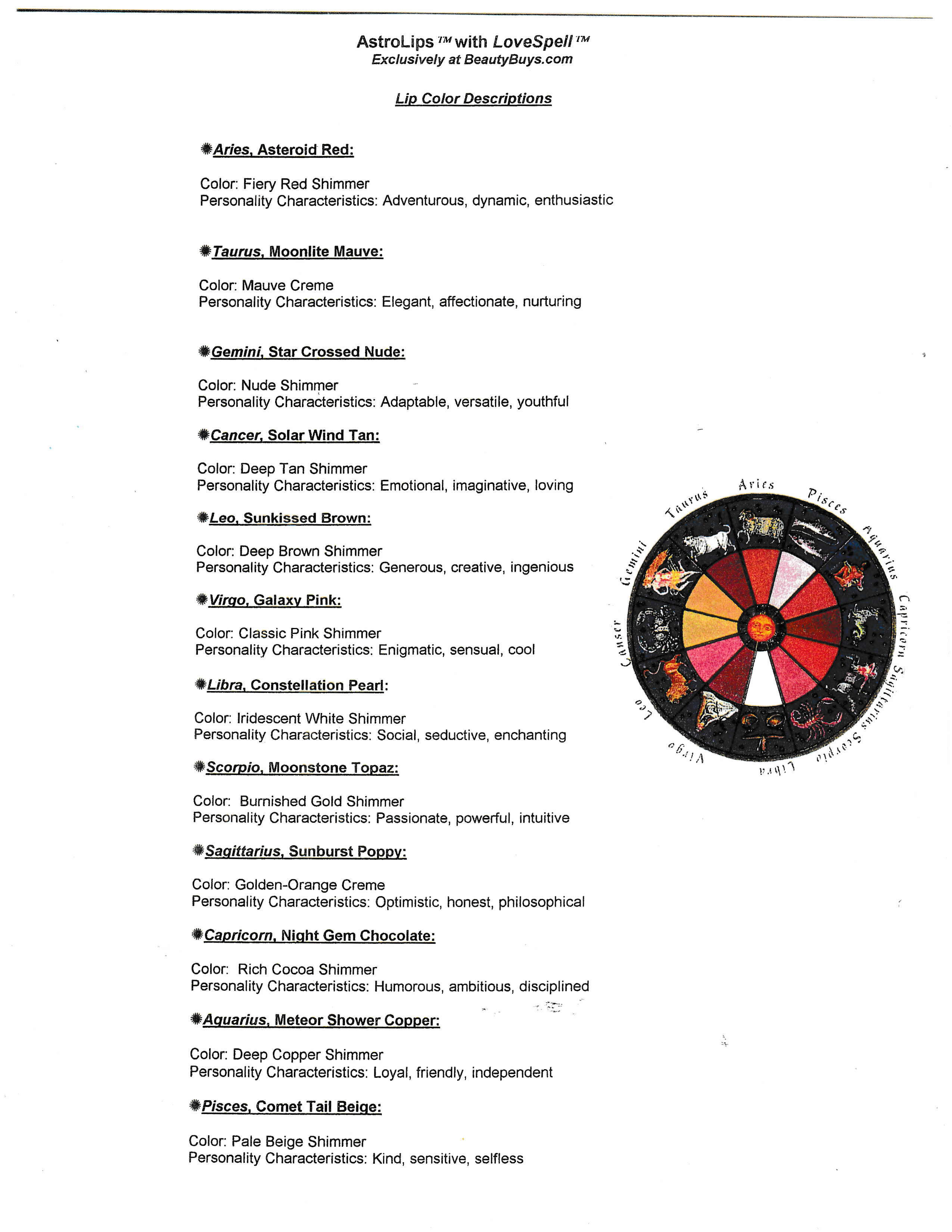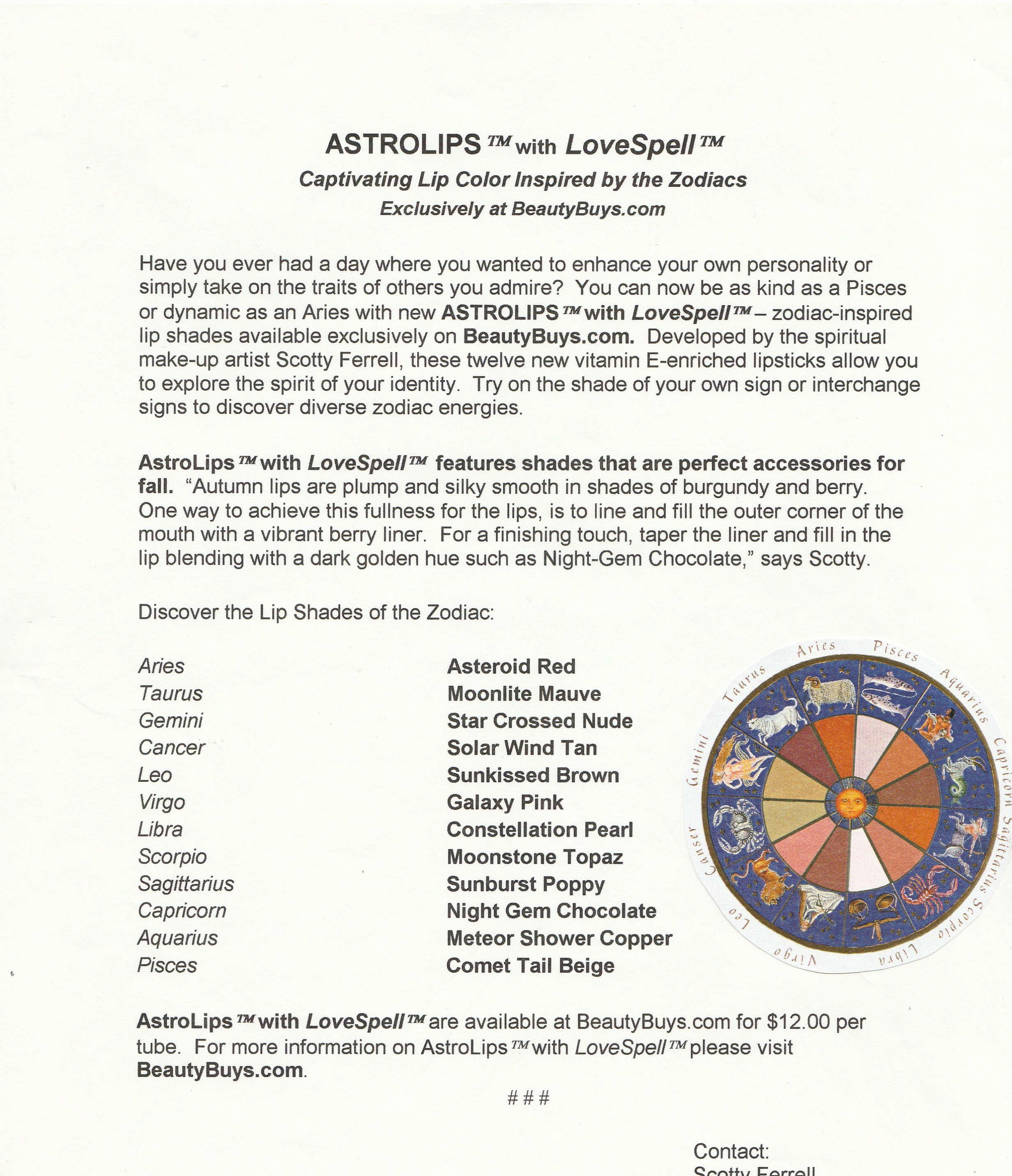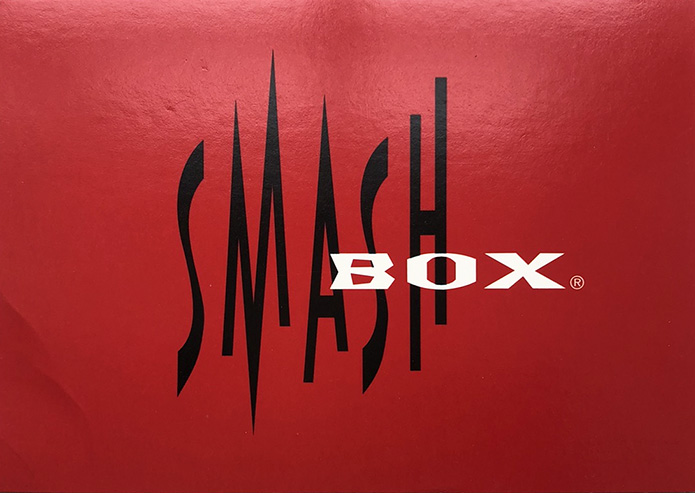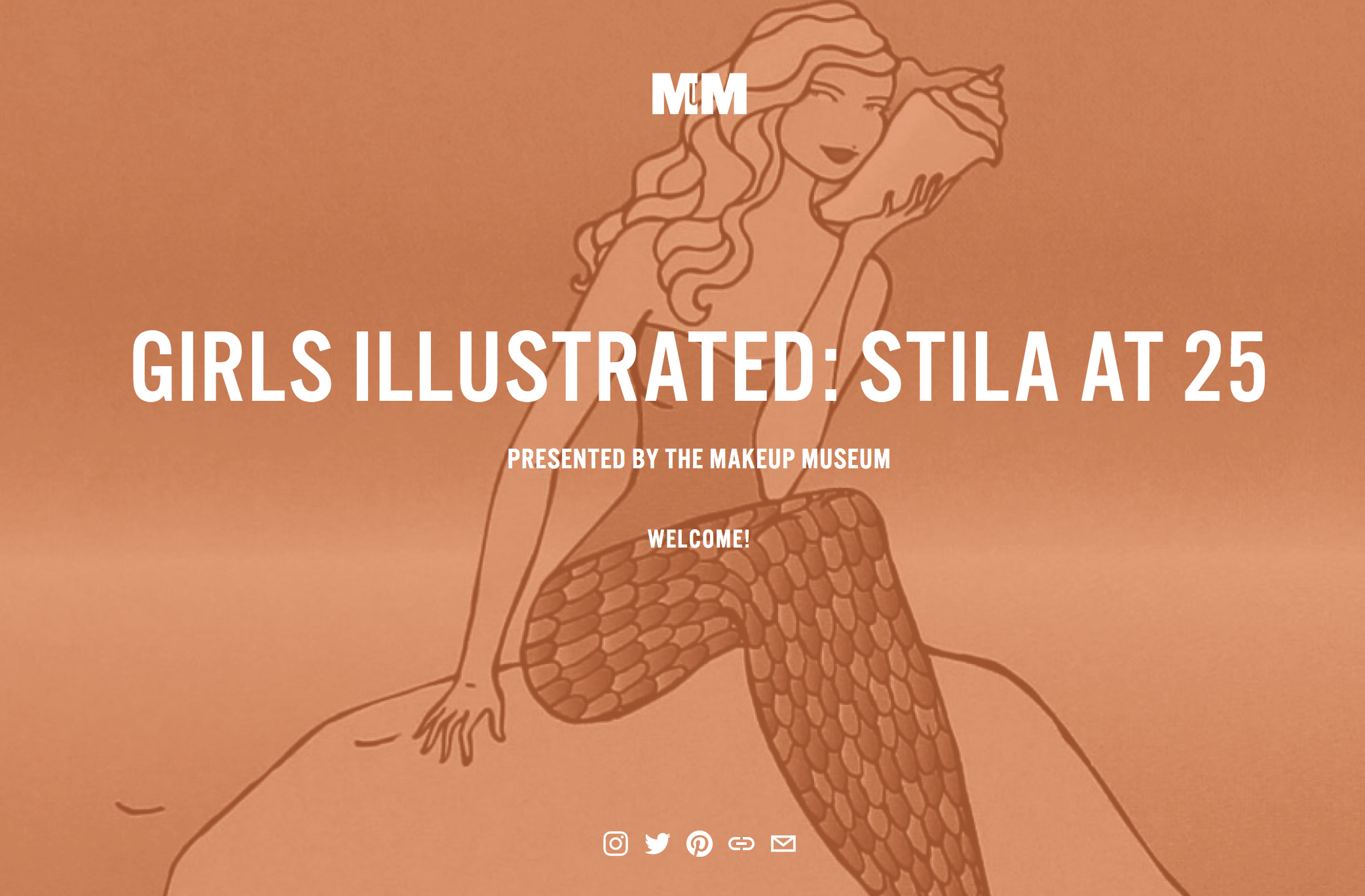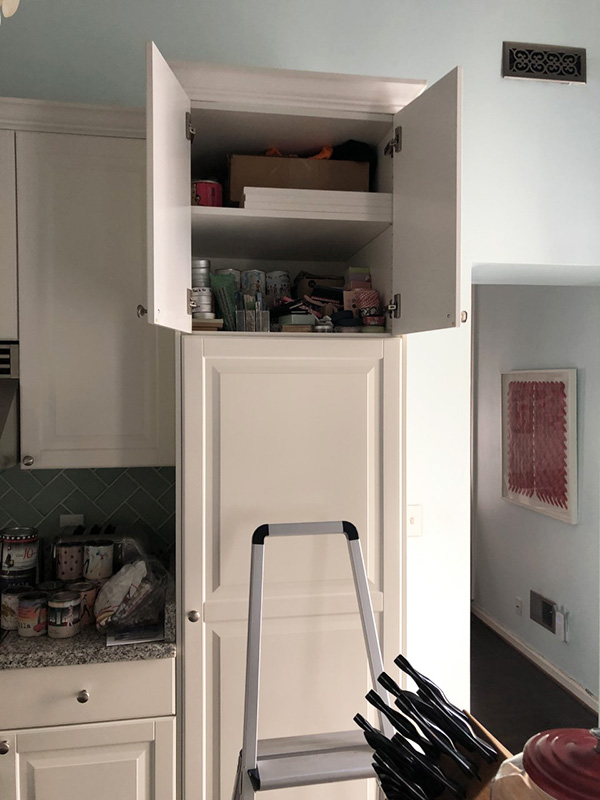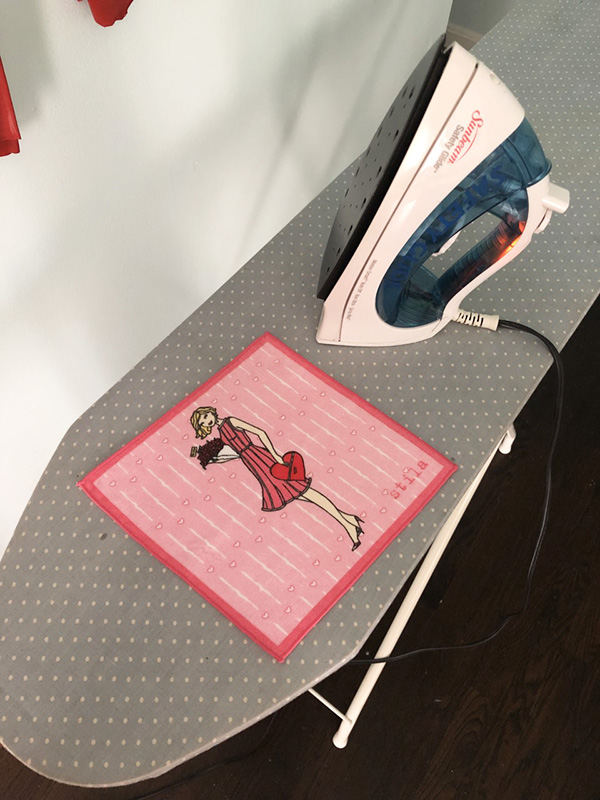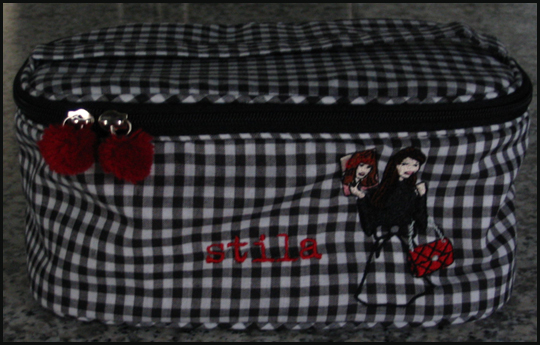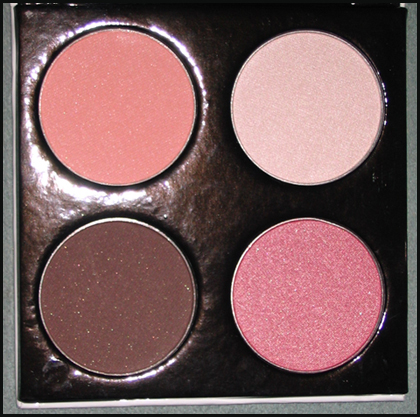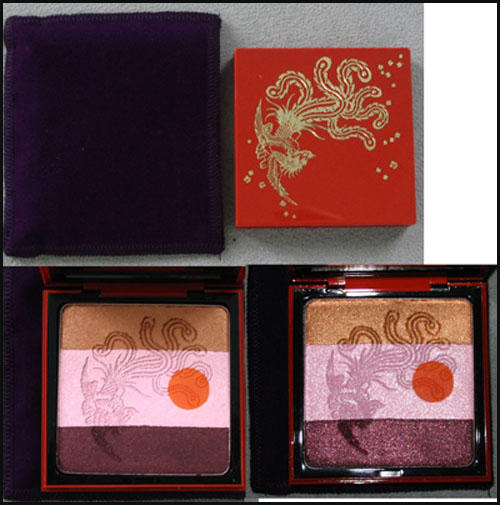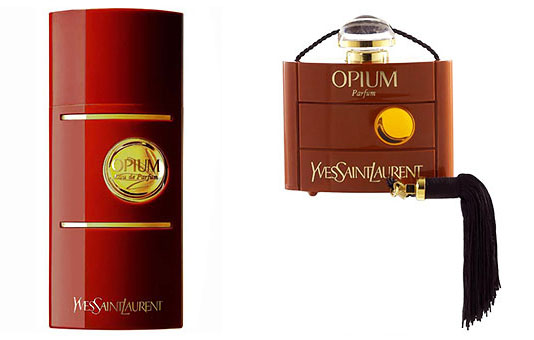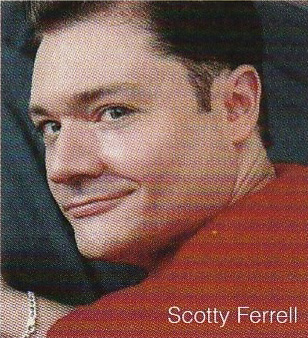 I'm always so grateful when someone agrees to an interview with the Museum, and the one I'm featuring today is very special! You might remember the AstroLips lipstick line that was mentioned in the Museum's history of zodiac-themed makeup and how I was puzzled over not being able to find any information about it or its creator, makeup artist Scotty Ferrell. Well, as luck would have it, Scotty found the Museum's article and introduced himself and offered more information on the line. Naturally I wanted to hear as much as possible about it, along with Scotty himself! He kindly granted me an interview. Please read on to discover his work, his experience working with some of the biggest brands in the '90s and early 2000s, and his latest venture: an (actually useful!) beauty app.
I'm always so grateful when someone agrees to an interview with the Museum, and the one I'm featuring today is very special! You might remember the AstroLips lipstick line that was mentioned in the Museum's history of zodiac-themed makeup and how I was puzzled over not being able to find any information about it or its creator, makeup artist Scotty Ferrell. Well, as luck would have it, Scotty found the Museum's article and introduced himself and offered more information on the line. Naturally I wanted to hear as much as possible about it, along with Scotty himself! He kindly granted me an interview. Please read on to discover his work, his experience working with some of the biggest brands in the '90s and early 2000s, and his latest venture: an (actually useful!) beauty app.
MM: How did you get into makeup? What interested you about it?
SF: My fascination for cosmetics began when I got into trouble playing in my Mom’s makeup and opening all the small perfume bottles she had from Avon. I would get so excited when the Avon lady came over to visit and brought her big case of colors and potions. I was hooked. The mystery of all the pretty colors and glass containers captured my spirit.
MM: What was your experience working in makeup in the '90s? And what were the big trends/products?
SF: The 1990’s really were amazing years for makeup. People were so excited to sit and learn about their makeup wanting to know how to apply eyeliner themselves and experiment with color. Quality makeup brushes and how to use them was so rewarding to work with people ready to discover and develop their own personal style. I had so much fun painting faces because the trends were really strong and each seasonal look was trying to top the next. I think the light lid and strong crease was all the rage because finally single eyeshadows were available in the artistry brands allowing for more experimentation. I loved when I started applying to my clients two different color liners top and bottom lash lines. Jewel tones in combination were really big during late 90’s.
The true smokey eye also came from this time period. The smokey eye really is buffing out the eyeliner on the lower lid and layering it with a dark shadow. But now today, anyone wearing eyeshadow says it’s a smokey eye when it’s not. I am not a big fan of the influencers because too much misinformation and lack of experience working with real people seems to be most popular. Influencers are pushing wrong information because they lack the makeup artistry experience applying makeup on people other than themselves. Too many influencers are promoting low quality products and wiz-bang techniques that do not wear or look professional. The legacy brands still have the some of the best tried and true products like Lancome’s Effacernes and Aquatique eye concealer/base, Elizabeth Arden Flawless finish cream foundation these products cannot be beat. Influencers are pushing the industry against quality products that cannot withstand a real photoshoots, catwalks under hot lights or outdoor weddings.
MM: Tell us about your alter ego, Gigi Romero, and how she inspired you to create the AstroLips line!
SF: Say GiGi Romero to me and I light up and am romanced dreaming about the silver screen stars like Bette Davis, Ava Gardner, Sophia Loren just to name a few. GiGi Romero is my muse/ alter ego that channels the larger than life confidence and on-stage personality that celebrates their fans with great entertainment. Makeup delivers the fantasy to a tangible reality, a way to feel special because it’s fun to play dress-up. So when the brainstorm came over me about AstroLips with Lovespell, I thought of GiGi Romero conjuring up the colors and speaking directly with the cosmos to create the shades and stories
belonging to each sun sign. AstroLips with Lovespell may still have a come back yet when GiGi Romero connects with the stars once again!
MM: You had mentioned [in a previous correspondence] you had some stories about Smashbox, Trish McEvoy planners, etc. Can you expand on those?
SF: Bill Parks, rest his loving soul, does not get the credit he deserves creating the Smashbox brand from scratch let alone me helping him launch the brand coast to coast. I consider the absence of acknowledging his contribution to Smashbox beyond shameful on the part of Estee Lauder and the great grandsons of Max Factor, Dean and Davis. The origin story begins with Bill Parks and me working for Trish McEvoy. Trish McEvoy held a big, big meeting with Nordstrom west coast to bring a next-level strategy for her Nordstrom counters putting Bill Parks in charge and me as at-counter National Artist to produce at the events. After this meeting show casing Bill Parks as a business superstar that he was, Nordstrom secretly invited just Bill to a clandestine behind the curtain meeting for Smashbox. Nordstrom was initially investing in the launch of Smashbox the artistry brand for Dean and Davis Factor, but knew it needed someone who actually understood selling color cosmetics. Bill agreed to their offer and left to be the creative head of Smashbox to create products, sell the products and be the personal face launching the line coast to coast. I stayed with Trish McEvoy for a couple more years seeing Bill grow the brand all on his own.
Bill actually worked to formulate the first cream eyeliner for that time because he knew the pitfalls from Trish’s eyeshadow liners and brush #11. How did Smashbox get on QVC? Well, let me tell you a story. Michael diCesare haircare and hair brushes were in several Nordstrom stores where he also met Bill Parks. They hit it off and whenever I saw Michael he would always ask me where’s Bill? Michael was already on QVC selling his products and asked Bill to do the makeup for his models. The rest is history once QVC met Bill Parks he began selling Smashbox to record heights on their channel. I joined Bill Parks in 1998 launching Smashbox into other retailers in addition to more Nordstrom doors. I trained Holly Mordini who later took Bill’s place on QVC after Bill passed away suddenly. I have many cherished memories and stories about my time with Trish and learning directly from her extremely talented hands and eye for color. Trish gave me the freedom, encouragement and confidence to become the best showman and artist I could be. Trish demanded us to all have a Franklin Planner and follow its system to set goals and exceed them. So after a big, big event in Dallas Neimans Northpark we all piled in this van we thought to go back to the hotel or wherever we were staying that night, but instead Trish had other plans. Somehow she kept telling the driver to continue to drive around, drive around while we all talked and Trish was in the groove to with her vision to send us her elite team back across the country opening counters, raising up important stores that needed an open to buy and who would stay in Dallas making sure we prevented any event returns or sold more than might come back to counter. A bunch of us, her elite team were frantically turning the pages to our Franklin Planners trying to make sure we got every word and detail correct coming from Trish. Suddenly, we all start talking about how organizing our makeup just like our Franklin Planners! I was already putting Face Essential shadows on palette boards to make it easier to paint at events. We all were competing for an edge to sell better and did our best with our brush rolls and our go-to favorites. It was decided that night that Trish had to go to Italy to get this new idea off the ground. The first set of pages were that same kind of plastic used for potted plants you get from the store. The brush bag of course had to be like Trish’s black Chanel bag that I did get to hold for her on one of our trips. The story about how Trish’s Planner came in to existence has changed over the years. Trish tells the story now moving up the timeline to when she was in Italy with her husband ordering the first version. The beginning year of the Planner was very exciting but took a lot of effort before we got better and better versions of the pages which had to be switched out several times for customers.

(image from trishmcevoy.com)
There is a very, very important story that I still to this day want to remind Trish personally. I am certain Trish does remember that Saks 5th Avenue almost sabotaged the Planner’s first Christmas. The part that Trish may have forgotten, and I would like to definitely remind her that I am the very person who sounded the alarm. I know exactly where I was and how I found out Saks 5th Ave was ready to go to the floor with their knock-off Planner. I was painting local models for a Saks 5th Ave Fashion show at the Intercontinental Hotel Miami. A Saks 5th Ave big-wig who flew down for the event also came back stage and was showing off what he knew that Saks “had a knock-off Planner in their warehouse ready to go on the Holiday Sales floor to under-cut Trish’s Planner 1 st Christmas.” I ran outside, on my very first cell, all the way outside and called the office demanding to speak with Trish directly. I said it was extremely urgent and that she had better get her lawyers on the phone to save the Planner! I called more than once even on a pay-phone in the lobby with every chance I could get until I was sure the message got through. Trish, if you're listening, my cell number is still the same!
MM: How would you say the cosmetics marketing landscape has changed since the late '90s? (e.g. the impact of the Internet/e-commerce/social media, etc.) And what stayed the same? Do you find it more or less difficult to sell makeup now?
SF: After the 90’s, companies did change dramatically not wanting to support events. Not wanting to pay artists who knew the brand intimately and loved teaching customers how to wear new looks, how to apply their makeup providing live- action customer service. The focus became and still is selling one hit-product at a time. Click-bait selling beauty over the internet breaks down the expertise of professionals that know how to design personalized beauty regimens for individual customers. Brands and social beauty stars are ignoring that beauty products must work together to be successful helping people. It is a must to talk to customers and listen to their needs so their lifestyles fit the products that do work together and deliver the results people are after.
MM: You've explained about your new app, but please elaborate on it and what inspired you to create it.
SF: This is the great segueway to my app. Face My Makeup app is reality based and is a digital version of how millions upon millions of makeup and skincare products were sold for years. Face My Makeup app is a digital face-chart but actually its true potential is personalized beauty’s next generation Face-cart that provides customer service and supports sales. I created Face My Makeup app directly from my experience selling on the road for Trish and BABOR. My customers would carry with them for years and tape to their mirrors the Face-charts I made for them with all the tips, tricks, colors, shades and multiple products that we chose together. Countless times a woman I helped years prior would find me again bringing her Face-chart and wanted a fresh new look. This love for the Face-chart and service it provides is so valuable and necessary for personalized beauty to be meaningful to make sense. Face My Makeup app has been received with open arms having over 5000 downloads from Google Play and the same amounts for iPhone app store. The elevator pitch that grabs people’s attention, “If you lost your makeup bag with all your favs, how many eClicks would it take for you to replace all your makeup? Would you remember all the names, shades and brands? Is there an eCommerce site that knows your Day Look products from your Night Look routine?” eCommerce, Mobile sales are obviously here to stay but what I know is must have companion is the Face-cart service from Face My Makeup app. (Disclaimer: The Makeup Museum is not endorsing/advertising the Face My Makeup app and has not been compensated in any way for mentioning it; its inclusion in this interview is merely for information-sharing purposes.)
MM: What are some of your favorite makeup trends or looks? (Can be current, can be historical, whatever you want!)
SF: Deep violet and emerald jewel tones playing off each other in the outer corner is to die for. I love an extended eyeliner that isn’t a cat eye but more Egyptian straight across with a softer edge. I think I still have a similar color story that I created for BABOR. A look I did paint on Jennifer Lopez on South Beach right after she made Selena. It was this beautiful tangerine and lime combination with shadows from Shu Uemura so super hot even though Jenny was less than nice.
MM: Anything else you'd like to add?
SF: I just want to get back on the team and do the work in beauty that I continue to see is still so necessary to produce results. Talking, listening to customers providing them service with the skills and experience to back it up; I’m there. Customers are demanding these conversations but those in charge have never painted a single face, ran an event with 100s of people making sure everyone leaves happy. Anticipating people’s needs and following up with a menu of choices is what it takes to grow a business. Translating this process digitally is doable but only from professionals that have touched faces with honest and real experiences. I mean why is Bobbi Brown now on Jones Road? Huge shout outs to forgotten greats, Alexander De Markoff, Stagelight, Germaine Monteil, Stendahl, PAYOT, Shu Uemura, and my ultimate favorite closest to my heart, Fernand Aubry!
Thank you so much, Scotty, for this wonderful history you've provided! It's incredibly illuminating to get a first-hand account of how the makeup industry and trends change (or don't), and I'm so pleased to hear more about my favorite era. The Face My Makeup app sounds great, but I hope we see more of Gigi's creations in the future too. 😉 MM'ers: any thoughts?
